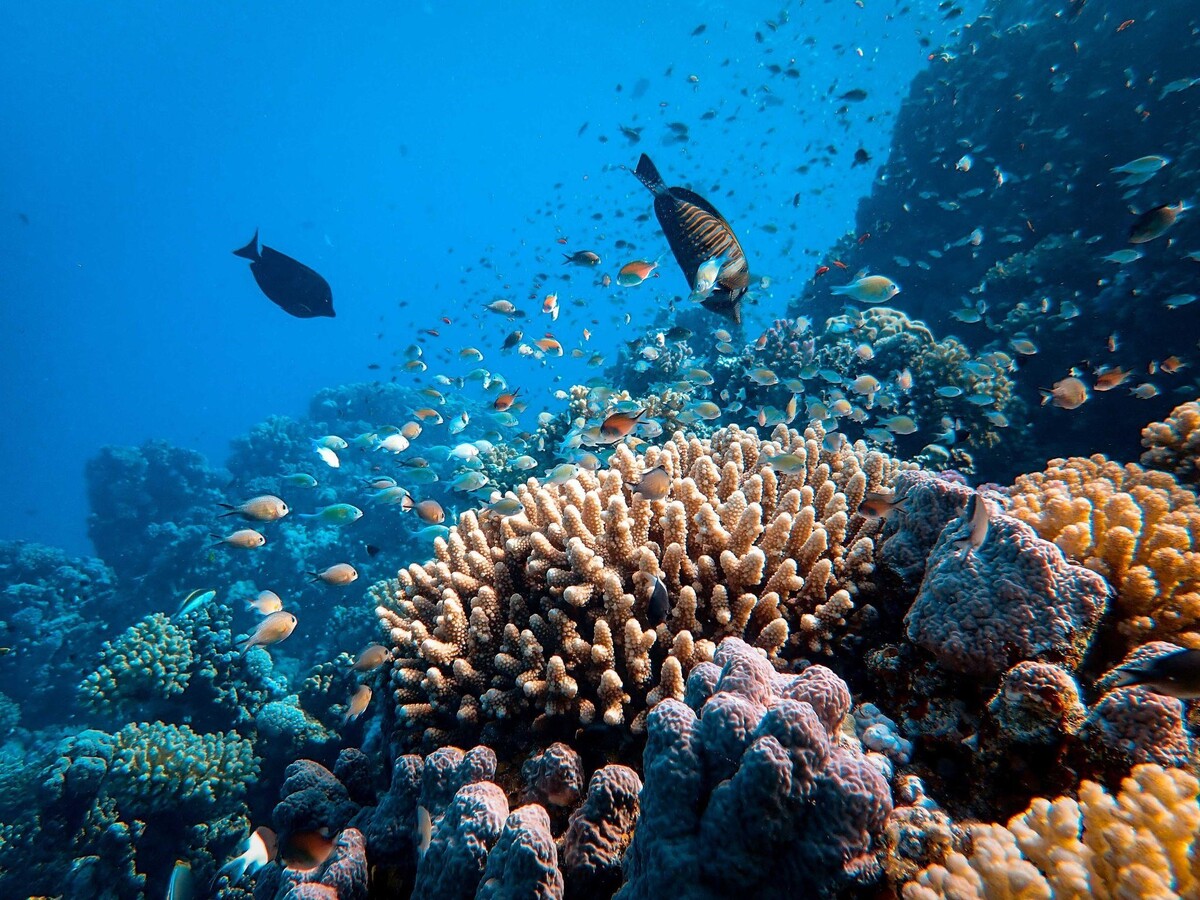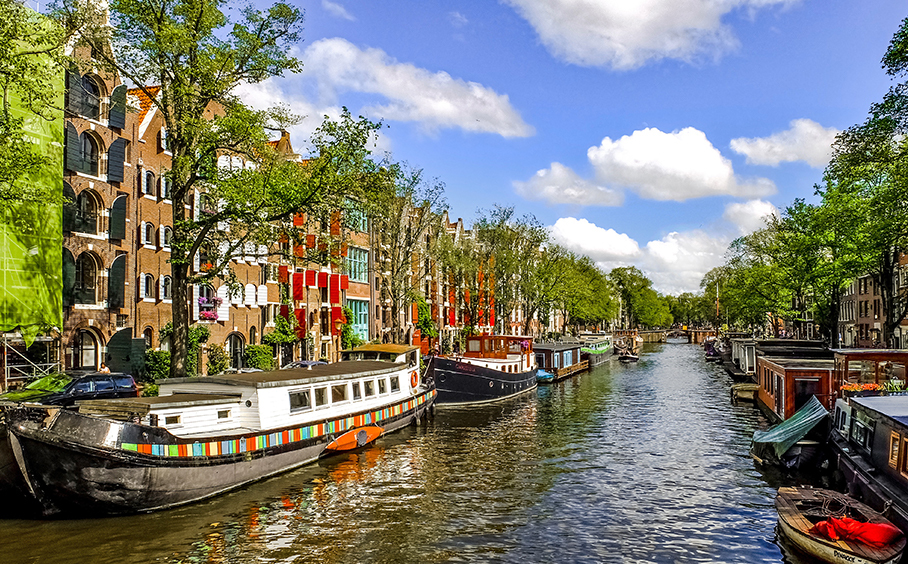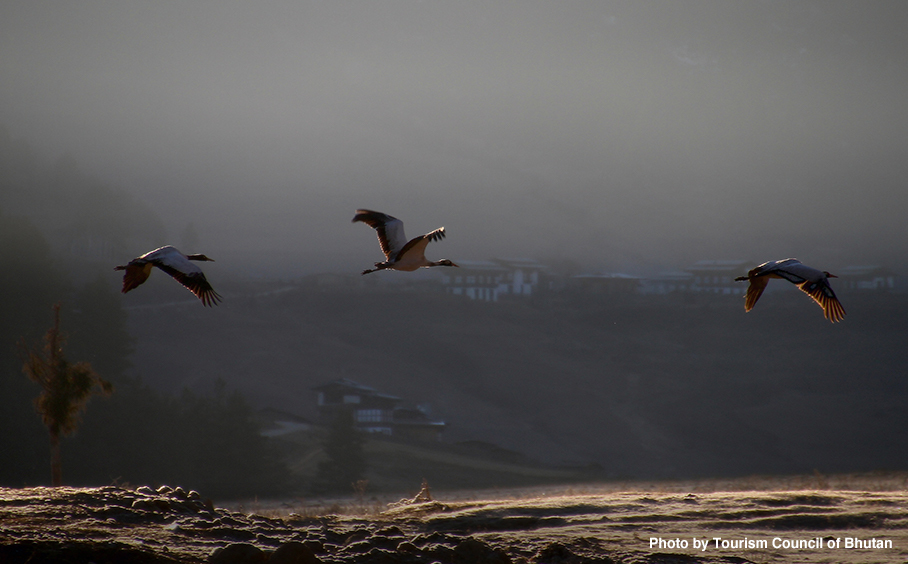
Issue
Tourism development is placing a growing burden on the local natural environment
Solution
The livelihoods of local communities are improved by promoting community-based sustainable tourism rather than tourism development by foreign capital
A wave of economic development
The Kingdom of Bhutan, a small country in the Himalayas, is known for its unique efforts to develop a balanced nation based on the GNH (Gross National Happiness) concept. The country aims not only for socio-economic development but also for the promotion of conservation of the natural environment and traditional culture. In 1995, Bhutan ratified the Convention on Biological Diversity, and in the same year, the National Assembly passed a constitutional provision that at least 60% of the country's land must be maintained under forest cover.
Gangtey-Phobji area was designated as Bhutan's third and largest Ramsar wetland in 2016. Situated in a wide glacial valley at an elevation of about 3000 meters, the valley streams flow through open grasslands into two major rivers. Most of the areas along the streams are wetlands, covered with grasses, bamboos, several species of shrubs and herbs, and thick water moss. These areas support rich ecosystems, including over 600 globally vulnerable black-necked crane (Grus nigricollis), the endangered red panda (Ailurus fulgens), tiger (Panthera tigris), the vulnerable sambar (Cervus unicolor), and other globally threatened species.
In terms of socio-economic aspects, the wetland is an important source of water for drinking and irrigated agriculture for 44 villages in the valley and downstream. In addition, the beautiful scenery has made the area a popular tourist destination. However, in the wave of the nation's economic development as well as globalization, there have been a number of proposals from outside the region to build large hotels.
Environmental education by the local NGO
The Royal Society for the Protection of Nature (RSPN) was established in 1987 as the first environmental NGO in Bhutan with the aim of conserving the black-necked crane in the Phobjikha Valley. While working to conserve wetlands and rare species in the area, RSPN has also implemented livelihood improvement and environmental education projects to gain the understanding of local residents. With funding from various donors, mainly from outside the country, RSPN has been able to combine rural electrification and agricultural productivity with wetland ecosystem conservation, by installing underground electrification and solar panels on each household to prevent electronic lines from disturbing cranes’ habitat, as well as promoting organic farming. In order for local residents and visitors to learn correct knowledge about black-necked cranes and wetlands, and to become attached to them, the Black-necked Crane Visitor Center was built with support from various donors. A self-sustaining system was established to use the cash income from the Black-necked Crane Festival and ecotourism programs to fund the operation of the center.
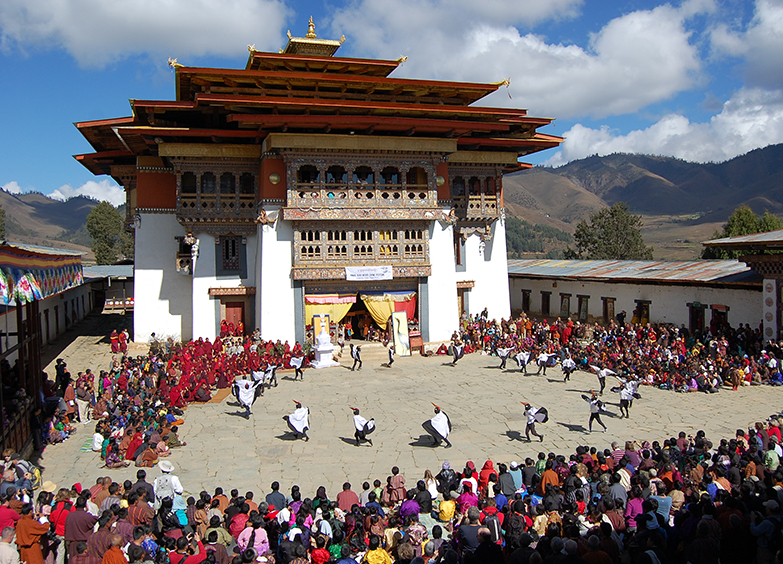
© 日本ブータン研究所
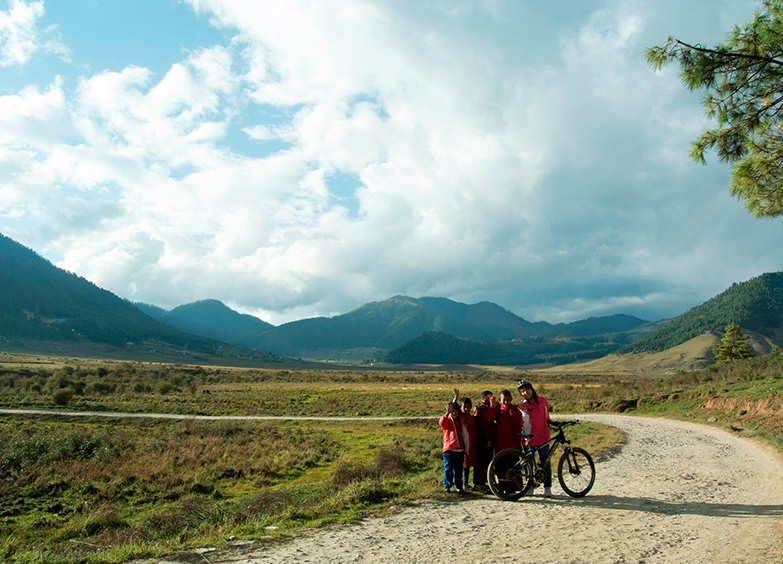
Photo by Tourism Council of Bhutan
Community-based Sustainable Tourism with Local People
While the RSPN was working on environmental conservation, the waves of globalization and economic development were simultaneously surging through the Phobjikha Valley. In particular, since 2000, the development of tourism as means of earning foreign currency has been booming at an accelerating pace throughout Bhutan, and the Phobjikha Valley, with its beautiful wetland landscape, has been one of the targets from the investors from outside the region for the hotel construction. To tackle this issue, RSPN collaborated with a Japanese environmental education NGO, the Japan Environmental Education Forum (JEEF), and obtained funding from the Japan International Cooperation Agency (JICA) to launch a full-scale community-based sustainable tourism (CBST) project. They developed homestays, trained local guides, developed local souvenir products and eco-trails, finally and set up a community-based tourism management organization to manage these activities, thereby creating a system to properly circulate the economic benefits of tourism within the community. By doing so, the residents became aware of the fact that the proper conservation of the cranes and wetlands had helped them become a tourist resource and improve their own livelihoods. As a result, a virtuous cycle was created in which they voluntarily participated in wetland conservation activities.
Location


